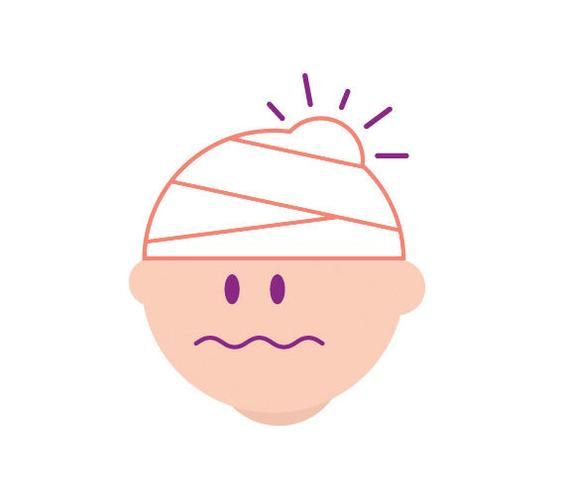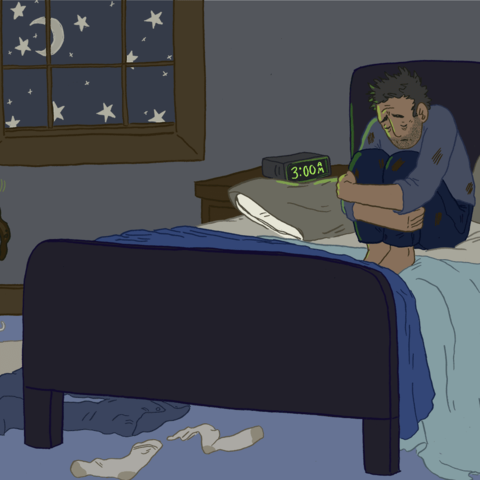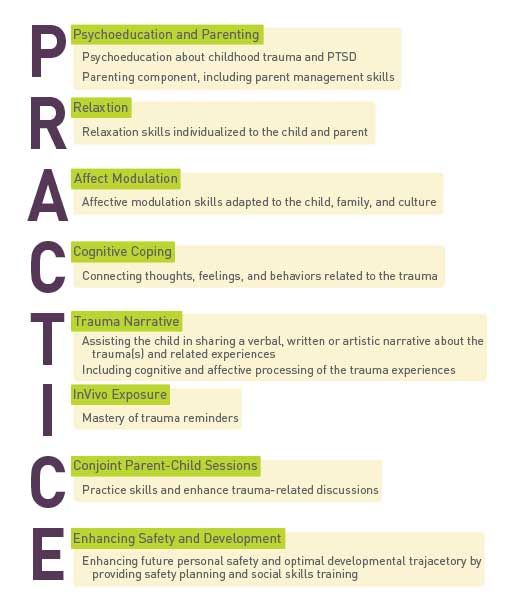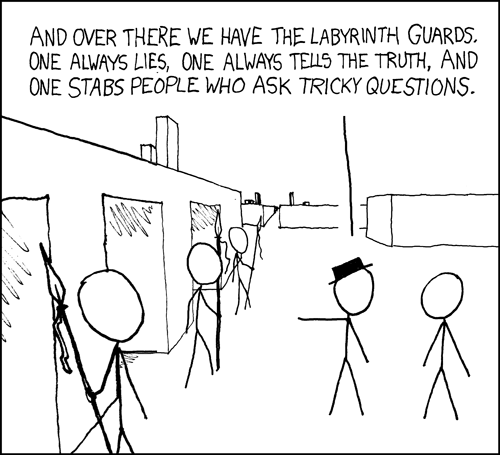Reading bumps on the head
The Shape of Your Head and the Shape of Your Mind
Health
How the archaic study of brain shape and head reading — the origin of terms like “highbrow” and “lowbrow,” “well rounded,” and “shrink” — shaped the modern obsession with the mind. One reason phrenology attracted so many followers was that it seemed to provide the toolbox for the American dream.
By Erika JanikCrafty Dogma/flickrTo anyone who has ever shaved his or her head and been horrified by the lumps and dents hidden beneath, the idea that those bumps said anything about a person’s character might be unsettling. But for millions of Americans in the 19th century, phrenology provided comfort and insight, a way to know and understand behavior and personality with seemingly scientific precision.
Why do we act the way we do? What determines the patterns of our behavior? How can we be better people? Every generation seeks answers to these questions, and in the mid-19th century, phrenology provided one incredibly popular and influential explanation.
Physician Franz Joseph Gall first developed his theories on the anatomy and function of the brain in 18th-century Vienna, where Sigmund Freud would later foster another science of the mind, psychoanalysis, beginning in the late 19th century. Gall grew fascinated by the physical structure of the body as a medical student. As a physician, he became a skilled anatomist who learned to dissect the brain to show the origins and pathways of cranial nerves.
Gall’s initial question came from something he’d observed in childhood: classmates who excelled at memorization also tended to have large protruding eyes. Theorizing about the connection, Gall suggested that the part of the brain located behind the eyes must be associated with verbal memory. This anecdotal observation and his later anatomical work on the structure of the brain led Gall to formulate his new science of the mind.
Gall conceived of the brain not as a single organ but as a mosaic of specialized parts that each governed a particular mental or emotional function.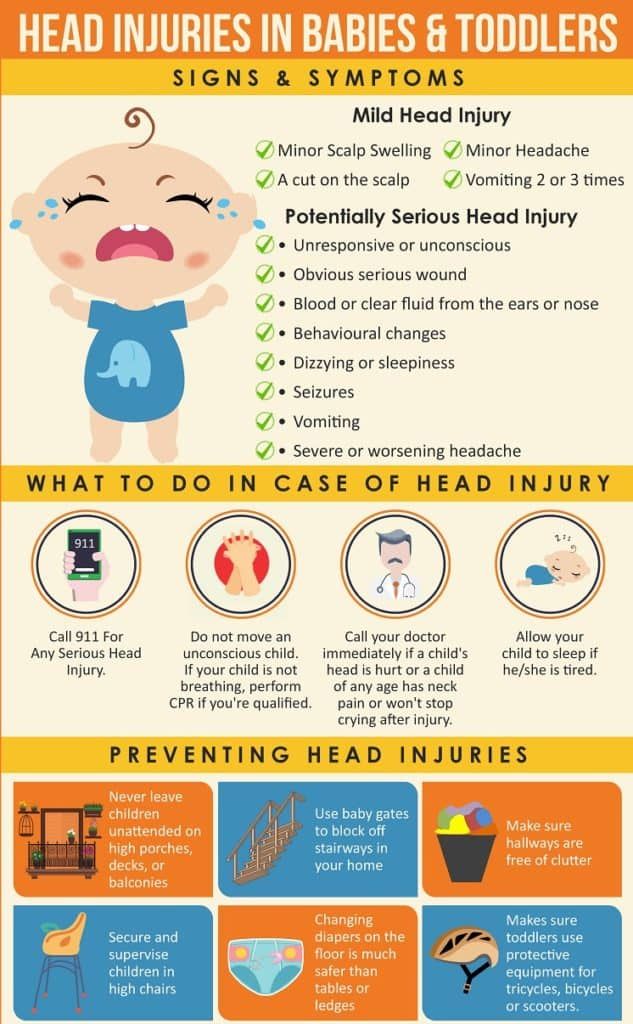 The size and development of each area, which Gall called faculties, implied a greater or lesser disposition toward the trait. These faculties included everything from reproduction to affection, vanity, and musical ability. Through his study, Gall came to believe that the shape of the brain matched the shape of the skull that encased it, so studying the bumps and indentations of the skull could reveal the function and character of the brain beneath. Later phrenologists came to believe that people could strengthen their positive brain organs. Like weightlifting builds muscle, the brain was an organ to be exercised.
The size and development of each area, which Gall called faculties, implied a greater or lesser disposition toward the trait. These faculties included everything from reproduction to affection, vanity, and musical ability. Through his study, Gall came to believe that the shape of the brain matched the shape of the skull that encased it, so studying the bumps and indentations of the skull could reveal the function and character of the brain beneath. Later phrenologists came to believe that people could strengthen their positive brain organs. Like weightlifting builds muscle, the brain was an organ to be exercised.
While phrenology became very popular in Europe, it found its most devoted audience in the United States. One reason phrenology attracted so many followers was that it seemed to provide the toolbox for the American dream. All classes of society found much to admire in phrenology. The upper classes liked it because it reassured them that the social hierarchy that placed them on top was “natural”; the emerging middle class and working classes liked it because its meritocratic message confirmed their hope of advancement through personal striving and self-improvement.
Phrenology seemed to provide what the strict Calvinist religion of Puritanical America had not: a way to better what God gave you, empowering individuals to help shape their own future, and making man the master of his own mind. Moreover, phrenology also became commercialized in the United States, in large part due to the efforts of the Fowler family.
The Fowler brothers, Lorenzo Niles and Orson Squire, turned their interest in phrenology into a substantial business based in New York City in the 1830s. The eldest brother, Orson Squire Fowler, hadn’t set out to be a phrenologist. The son of a farmer and church deacon from upstate New York, Orson first pursued the ministry but found his true calling in phrenology. He began to lecture on the topic to his classmates at Amherst College in Massachusetts and offered head readings for two cents each. His enthusiasm soon infected his younger brother, Lorenzo, along with the rest of the family, including younger sister Charlotte; her husband, Samuel Wells; and Lorenzo’s wife, Lydia Folger. After graduation, the brothers put aside their plans for a life in the church for another kind of missionary work.
After graduation, the brothers put aside their plans for a life in the church for another kind of missionary work.
The Fowlers translated phrenology into a doctrine of perfectionism, a set plan designed to create a perfect social and moral system. Their version of phrenology attempted to bring together all the strands of science capable of improving the mind or benefiting mankind, which they believed would herald a new and better world. And like all true-blooded 19th century American entrepreneurs, they also just happened to sell the phrenological gear and accessories needed to make this happen.
Phrenology seemed to provide what the religion of Puritanical America had not: a way to empower individuals to shape their own future.After her marriage to Lorenzo Fowler in 1844, Lydia Folger began lecturing on phrenology, physiology, anatomy, and hygiene to largely female audiences. Having a female phrenologist on board was a tremendous boon to the Fowlers’ business, as many women were uncomfortable attending lectures on health given by men.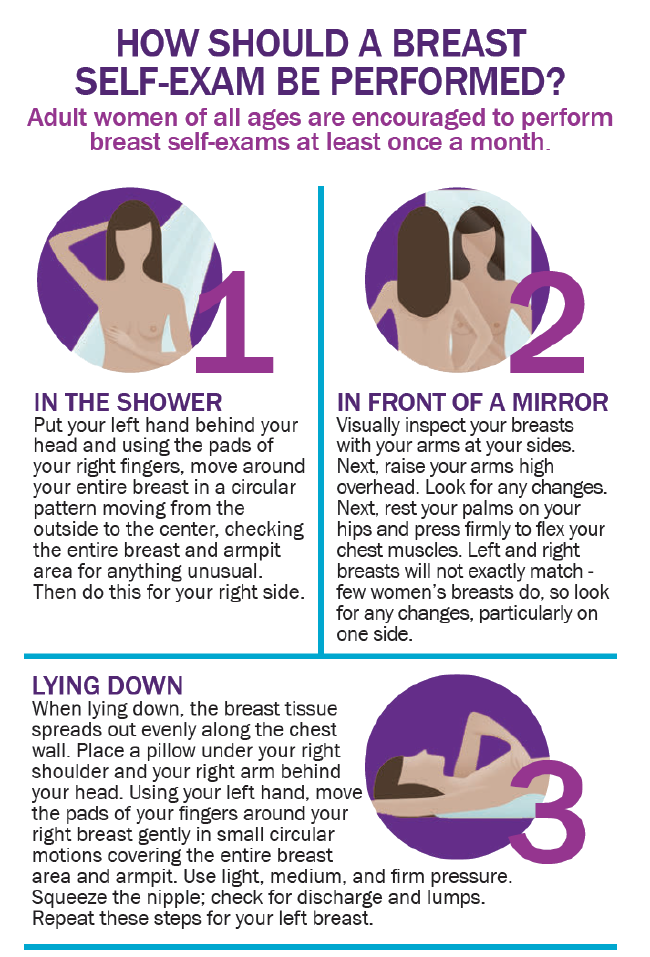 In 1849, when she was only 27 years old, Lydia enrolled in the newly-established Central Medical College of Syracuse and Rochester, New York.
In 1849, when she was only 27 years old, Lydia enrolled in the newly-established Central Medical College of Syracuse and Rochester, New York.
The curriculum of Central Medical College, an “eclectic” medical school, consisted of plant remedies, diet, and hygiene. Lydia received her medical degree a year later, only the second woman in the United States to do so (the first, Elizabeth Blackwell, graduated from New York’s Geneva Medical College in 1849). In 1850, she became principal of the “female department” at her alma mater, becoming the first female professor of medicine in the United States. She also established her own medical practice in New York City, specializing in the health of women and children, while continuing to write and lecture on phrenology with her husband.
Many women practiced phrenology, though fewer became recognized leaders like Lydia than in other forms of alternative medicine. In part, this was because phrenology lacked organizational structure and cohesion. Phrenology was largely an individual pursuit. There was no national phrenological association, and most patients had a one-time encounter with a phrenologist rather than an ongoing relationship. Most phrenologists supported women’s rights, adopting the phrenological view of women as full human beings endowed with the same human potential as men.
Phrenology was largely an individual pursuit. There was no national phrenological association, and most patients had a one-time encounter with a phrenologist rather than an ongoing relationship. Most phrenologists supported women’s rights, adopting the phrenological view of women as full human beings endowed with the same human potential as men.
Many phrenologists used the science to argue for the mental equality of the sexes while others found evidence of particular strength in faculties traditionally associated with women like morality, benevolence, and religiosity. Female phrenologists like Lydia and Charlotte Fowler examined and lectured before audiences of women almost exclusively. The same was true in nearly all medical fields, regular or alternative, as modesty and social propriety tended to keep women and men separated, particularly when it came to the human body. But while it was rare for a woman phrenologist to give a head reading to a man, female patients could and did receive readings from practitioners of either sex.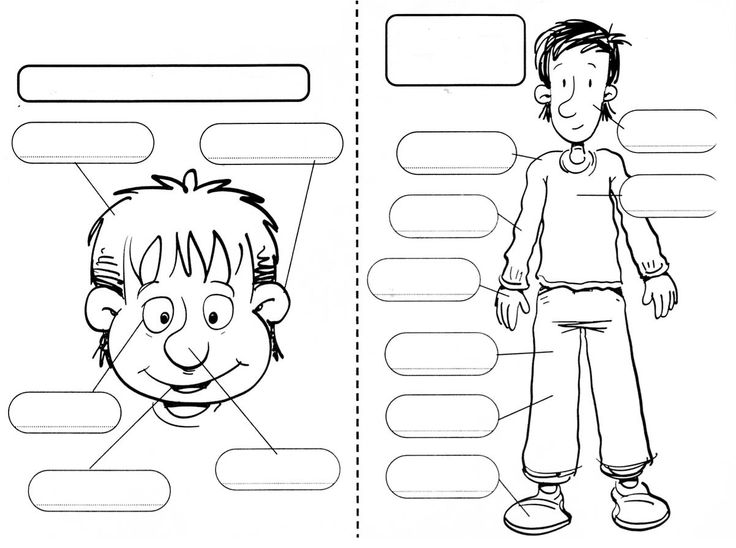
In 1838, the Fowlers began publishing the American Phrenological Journal, which quickly became one of the most widely read magazines in the nation and remained in circulation until 1911. They also published a library’s worth of inexpensive books on health and reform topics. These publications advised readers on the best daily regimens of diet, work, and play for proper mental functioning. Others, many penned by Lydia, offered advice on marriage and on conceiving and raising children.
Many modern phrases trace their roots to phrenology, including “highbrow” and “lowbrow,” “well rounded,” and “shrink.”The national obsession with head size and shape also infected daily conversation. Many modern phrases trace their roots to phrenology, including “highbrow” and “lowbrow,” “well rounded,” and “shrink” (as in “shrinking” certain undesirable qualities). “Getting your head examined” also has phrenological roots. Though generally considered an insult today, in the past, it was just what most people wanted.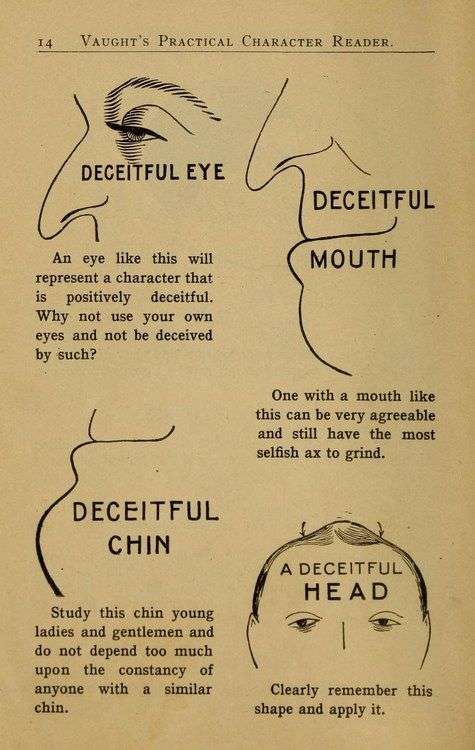 By the mid-19th century, the Fowlers’ publications could be found all over the country, and phrenological ideas had become a part of everyday conversation.
By the mid-19th century, the Fowlers’ publications could be found all over the country, and phrenological ideas had become a part of everyday conversation.
Still, the field had many skeptics. From its earliest days in Europe, phrenology faced plenty of criticism, mostly from doctors, scientists, religious leaders, and politicians. The Austrian government ordered Gall to stop lecturing in 1801 for fear that his talks would cause people to “lose their heads” and become materialists, believing only in the truths written on their skulls rather than those of God. Gall soon fled Vienna for France, but there, too, he faced a backlash that threatened his credibility.
French scientist Marie-Jean-Pierre Flourens became one of Gall’s most powerful adversaries. Flourens systematically tested Gall’s theories on animals, removing portions of the brains of dogs, rabbits, and birds to examine how the remaining sections functioned. His experiments led him to conclude that Gall was wrong: that the brain acted as a whole unit and not as discrete parts. Damage to one area caused other parts to take over and perform the same function. He published his findings in two explosive exposes.
Damage to one area caused other parts to take over and perform the same function. He published his findings in two explosive exposes.
In Washington, D.C., Professor Thomas Sewell also rejected phrenology as a method for understanding the brain. He argued that brain injuries rarely affected bodily function in the way predicted by phrenology. Moreover, Sewell argued that the brain couldn't possibly be measured from the skull alone. Harvard professor Oliver Wendell Holmes took a similar line of criticism. He compared the skull to a safe that enclosed contents—the brain—unknowable from the outside:
Many of us continue to hope that mapping the brain will reveal the secrets of human nature.The walls of the head are double, with a great air-chamber between them, over the smallest and most closely crowded “organs.” Can you tell how much money there is in a safe, which also has thick double walls, by kneading its knobs with your fingers? So when a man fumbles about my forehead, and talks about the organs of Individuality, Size, etc., I trust him as much as I should if he felt the outside of my strongbox and told me that there was a five-dollar or a ten-dollar bill under this or that particular rivet.
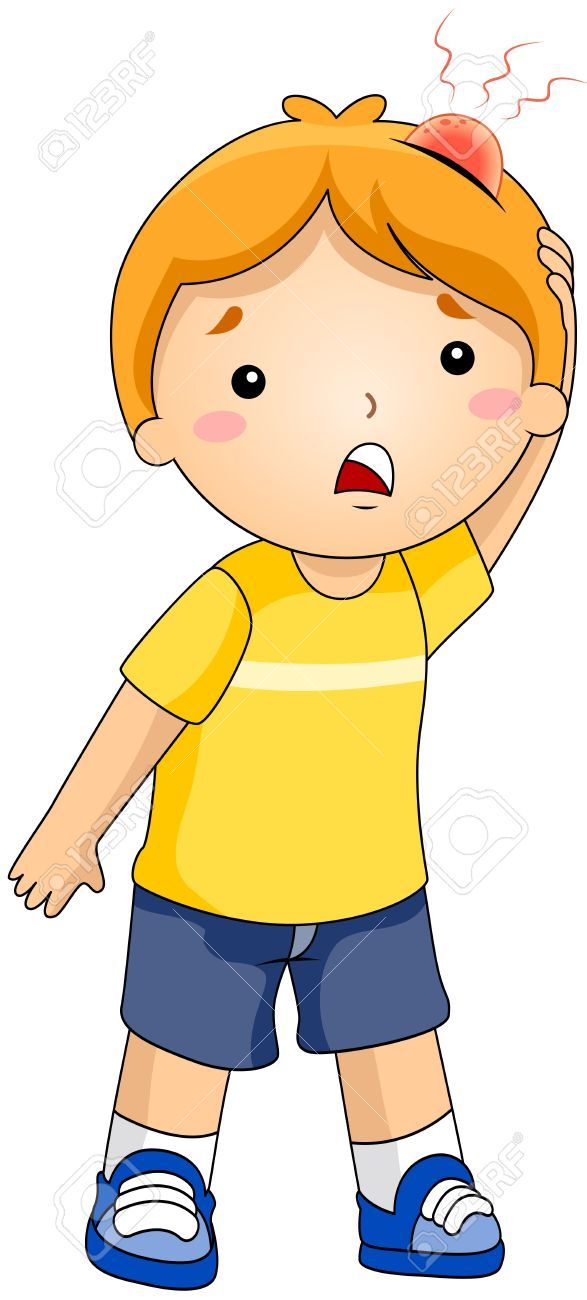
Holmes did not state outright that phrenology was wrong, but rather that there was no way to prove that it was right either, which made its status as a true science questionable.
By the 20th century, phrenology had mostly lost its scientific authority and much of its popular appeal. A few diehards, among them the children and grandchildren of the Fowlers, still practiced. The progress of medical science offered new and better tools for understanding the brain. To many Americans, phrenology now seemed old-fashioned and ridiculous.
That’s not to say that the phrenologists hadn’t gotten some things right. Gall placed the brain at the center of all cognitive and emotional functions at a time when some physicians still located some of the “passions” elsewhere, such as the heart and liver. From his work in comparative anatomy, Gall knew that the nervous systems in many lower animals consisted essentially of a spinal cord without much of a brain. More sophisticated animals, however, had larger, more developed brains, particularly the cerebral cortex. From these observations, Gall suggested that the cortex must be the highest-functioning part of the nervous system and that more sophisticated animals developed larger brains. This view of the nervous system was relatively new at the time, as most contemporary anatomists thought of the spinal cord as simply the “tail” of the brain.
More sophisticated animals, however, had larger, more developed brains, particularly the cerebral cortex. From these observations, Gall suggested that the cortex must be the highest-functioning part of the nervous system and that more sophisticated animals developed larger brains. This view of the nervous system was relatively new at the time, as most contemporary anatomists thought of the spinal cord as simply the “tail” of the brain.
Gall was also the first to make the strong case for the possibility of brain function emerging from spatial organization. Although Flourens’s findings and smear campaign worked to marginalize Gall in scientific circles, localization resurfaced again and again throughout the 19th century. In 1861, French surgeon and anthropologist Paul Broca showed that damage to one area of the brain can make a person unable to speak coherently without affecting the ability to understand others. His findings seemed to vindicate the brain localization idea behind phrenology, but because phrenology had fallen into such disrepute, Broca was careful to draw distinctions between his work and Gall’s.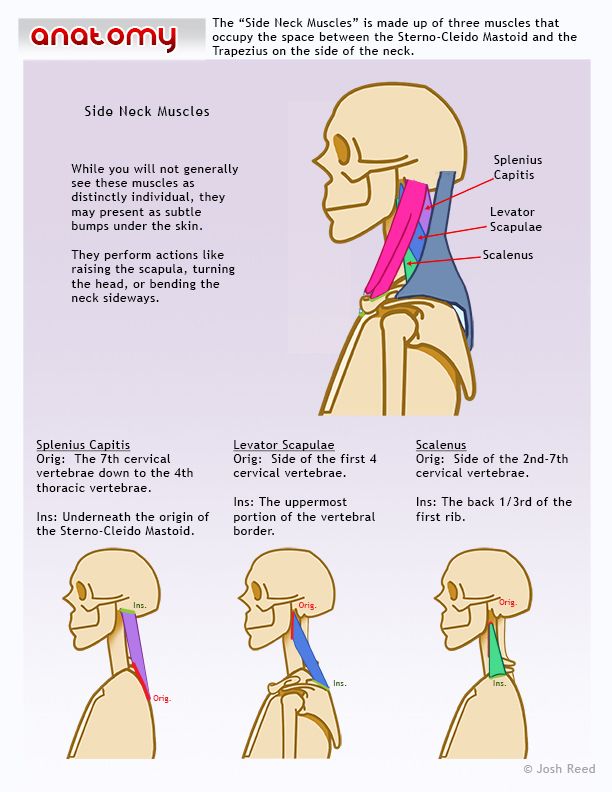
Later in the 19th century, British neurologist David Ferrier created maps of the motor and sensory functions in the cerebral cortex that owed a clear debt to phrenology. More recently, in 2002, scientists in the Brain Mapping Division at the University of California, Los Angeles, announced the creation of a “large-scale computational brain atlas” to “visualize” brain structure and function, and to store “information on individual variations in the brain structure and their inheritability.” Gall could have made a similar announcement two centuries earlier, though with far more primitive tools.
The 19th-century fascination with the brain isn’t all that far removed from our modern obsession with the mind. We have once again elevated the brain to cultish status, celebrating and perhaps even aggrandizing its power and purpose to shape the world and ourselves. Many of us continue to hope, as the phrenologists did, that mapping the brain will reveal the secrets of human nature that, once known, will allow for personal improvement and transformation.
Popular neuroscience seems to suggest that concentrated efforts to improve the brain will make us smarter, faster, and more efficient, and maybe even lead to perfection. Headlines and book titles like Super Brain Power, Brainfit, Use Your Brain to Change Your Age, Coaching with the Brain in Mind, and Rewire Your Brain for Love scream that the key to life—a better job, better health, better love, better children, better looks—is the brain, no matter the improvement sought and regardless of how little we actually know about how the brain works. It’s the phrenology of the 21st century, and Americans are as ravenous for it today as they were in the 19th century.
This post is adapted from Marketplace of the Marvelous: The Strange Origin of Modern Medicine.
Phrenology Head - Kansapedia - Kansas Historical Society
Phrenology was a popular 19th century theory that a person's character could be read by measuring the shape of his or her skull. This plaster head is called a phrenology head or bust.
This plaster head is called a phrenology head or bust.
Modern phrenology was founded in the 1790s on the tenets of an Austria physician, Franz Joseph Gall. During Gall's time, neurologists proved that different areas of a person's brain were responsible for different functions such as memory and speech. Gall, however, took this scientific proof one step further when he developed phrenology, which he called "cranioscopy." According to Gall's theory, the mind is composed of distinct "organs" responsible for certain faculties. All things being equal, the size of an organ is a measure of its power. He believed that the different sizes of the organs of the brain determined the physical shape of a person's skull based on how strong or how weak that organ is. He surmised that just as muscles grow larger when they are exercised, different parts of the brain would either grow or shrink with use. Therefore, the shape and surface of the skull could be read as an index of an individual's natural capacities, aptitudes, and tendencies.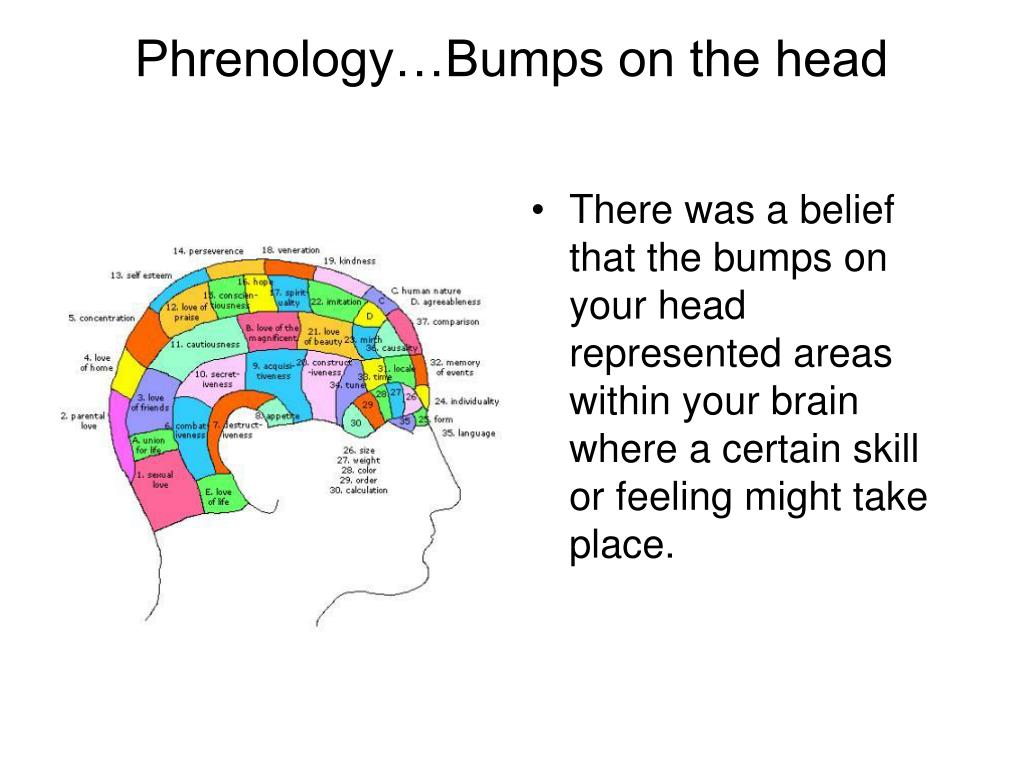
Skull Readings
During a skull reading, the phrenologist would run his fingers and palms over a person's head, carefully feeling for bumps and concavities. Occasionally a tape measure or calipers also were used to get precise measurements. These shapes would then be compared to a three-dimensional head (see a side view of the plaster bust) or a chart (see image below) to determine which of the approximately 35 organs were responsible for an individual's aptitudes and characteristics.
According to the phrenologists, both physiological conditions (such as circulation and digestion) and mental faculties (such as cautiousness or veneration) could be measured on the skull and graded on a scale of 1 (very small) to 7 (very large). For example, if a person was determined to have a very large Eventuality organ, he should "possess a wonderfully retentive memory of facts, incidents, and general knowledge, and have strong craving for information. [He] would be a great devourer of books, newspapers, and periodicals; and with large Language and Imitation [organs], would excel in story-telling. " And a person with a very small Eventuality organ? According to the 1869 book, How to Read Character, "Your memory is utterly untrustworthy. You forget almost everything relating to what has happened, no matter how recently."
" And a person with a very small Eventuality organ? According to the 1869 book, How to Read Character, "Your memory is utterly untrustworthy. You forget almost everything relating to what has happened, no matter how recently."
Making the Most of Himself
The subjects who participated in phrenology did so because they believed that if they received a true character reading, it would help them be more self-aware and more carefully choose a mate and a vocation. The phrenologist would tell them, based on their measurements, which mental faculties they needed to either restrain or cultivate in order to "correct any errors of judgment or improper habits he may possess—to cultivate and develop all the higher qualities of mind and heart—and to make the most of his opportunities and of himself."
Critics of phrenology have compared it to a palm reading or an astrological reading. If a person's attributes and characteristics as read by a phrenologist did not seem to fit his personality, the criticism was discounted by stating that another of the brain's larger organs counteracted the effects of the small organ.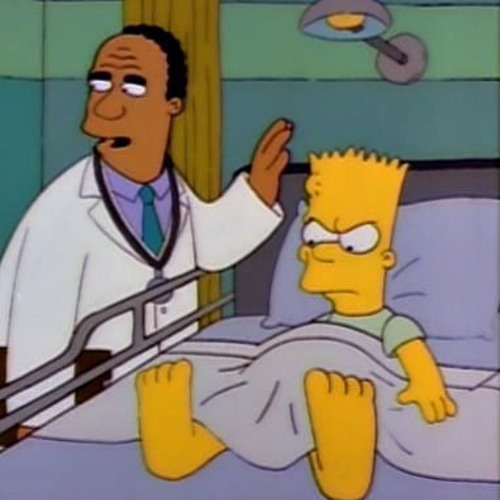 Critics also pointed out that the location and function of particular organs were occasionally revised and renamed and that the number of organs initially began at 26 during Gall's time and increased to 35 or more by the turn of the 20th century. There were also racial and anthropological concerns as particular groups of people were labeled and categorized by their skull shape.
Critics also pointed out that the location and function of particular organs were occasionally revised and renamed and that the number of organs initially began at 26 during Gall's time and increased to 35 or more by the turn of the 20th century. There were also racial and anthropological concerns as particular groups of people were labeled and categorized by their skull shape.
Phrenology was discredited by scientists and others by the 1840s and was equated with other forms of quackery. Nevertheless, it remained popular, with peaks in the 1830s and 1840s, the 1860s, the 1890s, and into the early 20th century.
The phrenology bust in the collections of the Kansas Museum of History may be seen in the "Business and Industry" section of the museum's main gallery. This particular model dates from the early to mid-19th century.
Entry: Phrenology Head
Author: Kansas Historical Society
Author information: The Kansas Historical Society is a state agency charged with actively safeguarding and sharing the state's history.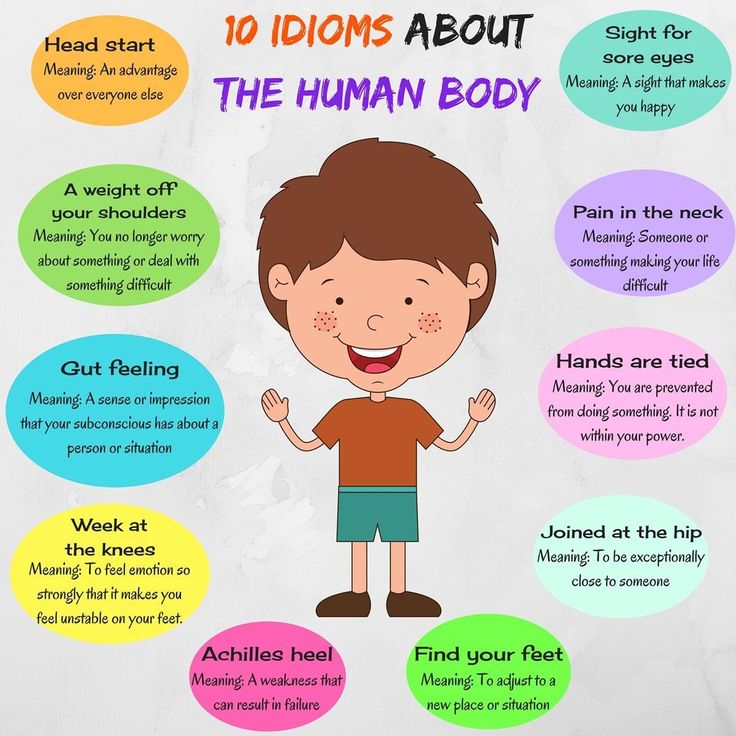
Date Created: November 1999
Date Modified: December 2014
The author of this article is solely responsible for its content.
Types of bumps on the back of the head
Lumps on any part of the head can cause concern, but in most cases they are not serious. In this article, we will get acquainted with the important protrusions of the head area.
Lumps on any part of the head can cause concern, but in most cases they are not serious. These bumps can be caused by skin conditions on the head, head trauma, infection, and abnormal growth of skull bone cells. Most of these problems are easily and spontaneously solved. However, in some cases it is necessary to consult a doctor. What are these bumps and what treatment do they need to remove them effectively. That is why it is so important to know them. nine0003
Types of skull projections based on characteristics
Lumps on the back have certain characteristics by which they are classified.
They may have the following features:
- Large or small
- Soft or hard
- One or more
- Fixed or movable
- Inflamed or not inflamed
Each of these masses is created for reasons that in many cases are not a cause for concern. But as a general rule, if you suddenly develop a bump or sore in your head that is painful or deformed in appearance, you need to see a doctor to treat it. nine0003
Types of bumps behind the head depending on the causes
Masses on the back of the head can occur for various reasons, sometimes accompanied by pain, and sometimes deformity of the scalp. Some of the reasons are listed below.
Mass due to head injury
If for any reason a blow is applied from behind, a slightly hard mass and bleeding (hematoma) may form at the site of impact and under the skin. These bumps usually heal gradually over two weeks. nine0003
Cold compresses can be used to reduce swelling in minor injuries.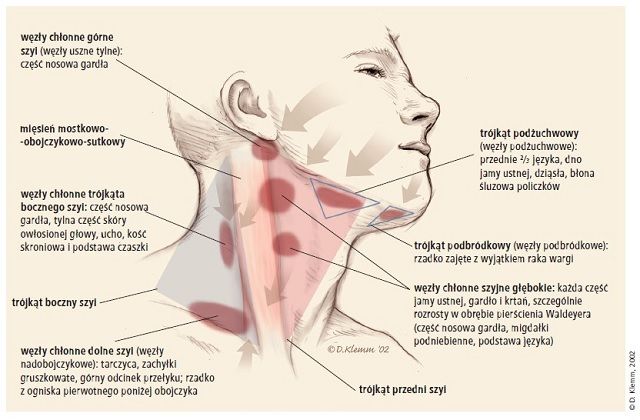 The use of pain relievers is also a great help in reducing pain.
The use of pain relievers is also a great help in reducing pain.
But in the event of a severe injury, a person can get a concussion. Symptoms such as headache, nausea, vomiting, blurred vision, extreme tiredness or drowsiness, memory loss are important and should be treated by a doctor.
Sebaceous cyst
Sebaceous cyst is the main group of cysts, which are divided into two types. nine0003
Epidermal cyst
Epidermal cysts are made up of creatine and fat and affect the thin outer layer of the skin called the epidermis. These cysts can be the result of a mild skin injury or acne and have specific symptoms.
- These are round cysts that slowly grow up to five centimeters.
- Cysts are not painful unless they are infected.
- They are not cancerous
- They usually do not need treatment and go away on their own. nine0014
- If treatment is needed, the doctor may prescribe antibiotics, steroid injections, or drainage of the cyst.

Pilar cyst
Pilar cysts are composed of creatine and are present in the outer hair follicle or hair follicle. These cysts form around the front and back of the hairline. They are half to five centimeters in diameter and are usually:
- They are not cancerous.
- Are hereditary. nine0014
- It is more common in women than in men.
- In most cases they go away without treatment.
- Give antibiotics or drain the cyst if necessary.
Folliculitis
Inflammation of the hair follicles or folliculitis occurs as visible red or white lumps around the hair follicle. This lesion is more common in the head, especially in the back of the head. Folliculitis can be caused by a bacterial, fungal, viral infection or skin inflammation during hair growth. People with diabetes are very prone to inflammation of the hair follicles. nine0003
Bacteria can infect hair follicles and lead to folliculitis.
Treatment for folliculitis varies depending on what caused it. Antibiotics, antifungals and proper diet are effective in improving it. In addition, when treating this mass, the head should not sweat as much as possible and hair creams and shampoos should not be used.
Pilomatricoma
Pilomatrixoma is the name for a hair follicle tumor that is abnormal but usually harmless. This mass is caused by overproduction of hair matrix cells. nine0003
Pilomatrixoma appears as monochromatic or purple dome-shaped lesions and can grow to several centimeters. This mass is one of the most common types of bumps on the back of the head and neck and occurs in both children and adults.
To treat a hair follicle tumor, a sample is taken and then the mass is completely removed by outpatient surgery.
Lipoma
Lipoma is a soft mass of fat under the skin that moves in place. This mass slowly grows up to two centimeters. Lipoma is a harmless mass that can be found on different parts of the body.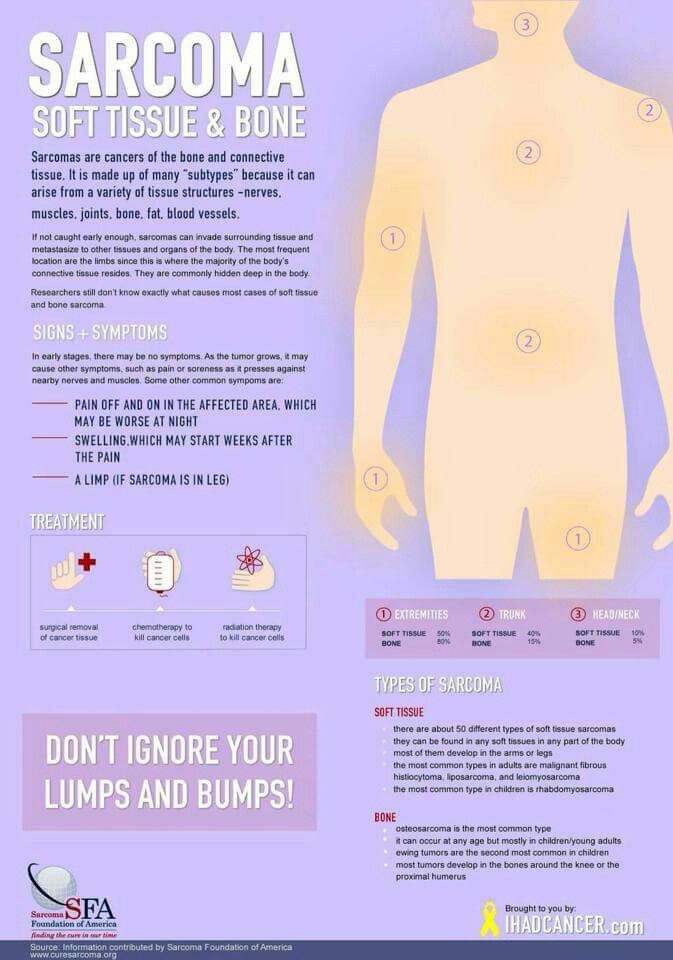 Of course, it appears less on the back of the head and neck. nine0003
Of course, it appears less on the back of the head and neck. nine0003
Doctors do not know the exact cause of lipoma, but many cases occur in people between the ages of 40 and 60. It is slightly more common in men than in women.
Lipomas do not need special treatment and go away on their own, but if they grow or harden, they should be checked by a doctor.
Seborrheic keratosis
Seborrheic keratosis is a wart-like, non-cancerous bump that usually appears on the head and neck of older people. These bumps are often harmless and therefore rarely treated. If the doctor is concerned about the cancerous appearance of these lumps, he will remove them using cryotherapy or electrosurgery. nine0003
Lymphadenopathy
Lymph node swelling or lymphadenopathy occurs when a lymph node behind the ear becomes inflamed due to external factors. Skin or ear infections are the main cause of swelling in these nodules. These swellings usually go away on their own, but if the swelling lasts for more than two weeks, you need to see a doctor.
Mastoiditis
The part of the skull bone behind the ear is called the mastoid process. If bacteria infect this area of the skull, it can cause mastoiditis. This infection occurs in the air spaces of the bone. nine0003
Mastoiditis is more common in children than in adults and is a serious infection that requires timely medical treatment. The disease appears as soft red bumps on the back of the ear that can cause the ear to pop out.
Other symptoms include mastoiditis. For example, ear discharge, possible hearing loss, high fever, nausea and irritability, headache.
Doctors prescribe antibiotics to treat mastoiditis, and sometimes surgery is needed to open the mass and drain the infection. nine0003
Craniosynostosis
Craniosynostosis means premature healing of the skull joint. This is a birth defect in which one or more fibrous joints between the bones of a child's skull fuse prematurely. In this case, the baby's umbilical cord is formed when the development of the brain is not yet complete. Because the baby's brain is still growing but the skull is closed, pressure is applied to the skull bone and the skull deforms.
Because the baby's brain is still growing but the skull is closed, pressure is applied to the skull bone and the skull deforms.
Surgery is required to treat craniosynostosis and correct the deformity of the head so that the brain can grow normally. Early diagnosis and treatment creates enough room for brain development. nine0003
Bone growth masses
Bone growth (exostosis) is a benign bone tumor that rarely occurs in the skull. This complication is caused by long-term irritation, arthritis, infection, or trauma and is sometimes accompanied by chronic pain. Pain medications, physical therapy, and surgery are best suited to treat this type of mass.
Tumor of the skull bones
Sometimes the bumps on the back can be caused by a tumor of the bone. One of the most common types of skull cancer is chordoma. This tumor grows from the bones at the base of the skull. nine0003
If the cordoma is small, it has no obvious symptoms, but if it is large, it is accompanied by symptoms such as difficulty walking and balance, headache, hearing and vision problems.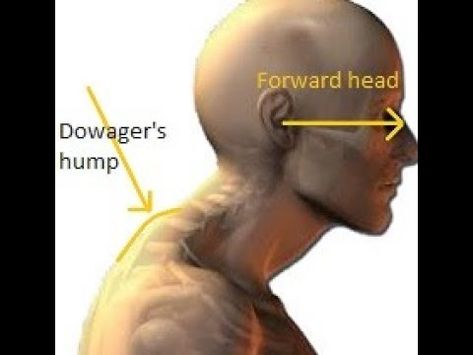 In some cases, the tumor can spread to other parts of the body.
In some cases, the tumor can spread to other parts of the body.
Treatment of skull bone tumors will depend on a number of factors, including whether the tumor is benign or malignant, the size of the tumor, the location of the tumor cells, and other individual variables. nine0003
Subcutaneous hair masses
Sometimes hair grows into the skin as it grows. In this case, a small hard red bump appears on the surface of the skin. This noticeable mass is caused by pus from subcutaneous hair growth. Pimples are usually harmless and go away with hair growth. In some cases, it must be removed from under the skin with a special hair product.
Types of bumps behind the head due to the importance of treatment
Masses on the back of the head may be harmless or need treatment. nine0003
1. Tumors that are not serious : A small lump on the scalp that goes away on its own is not serious.
2. Large tumors on the back of the head, which are accompanied by redness or pain, need to see a doctor, especially if they are accompanied by fever.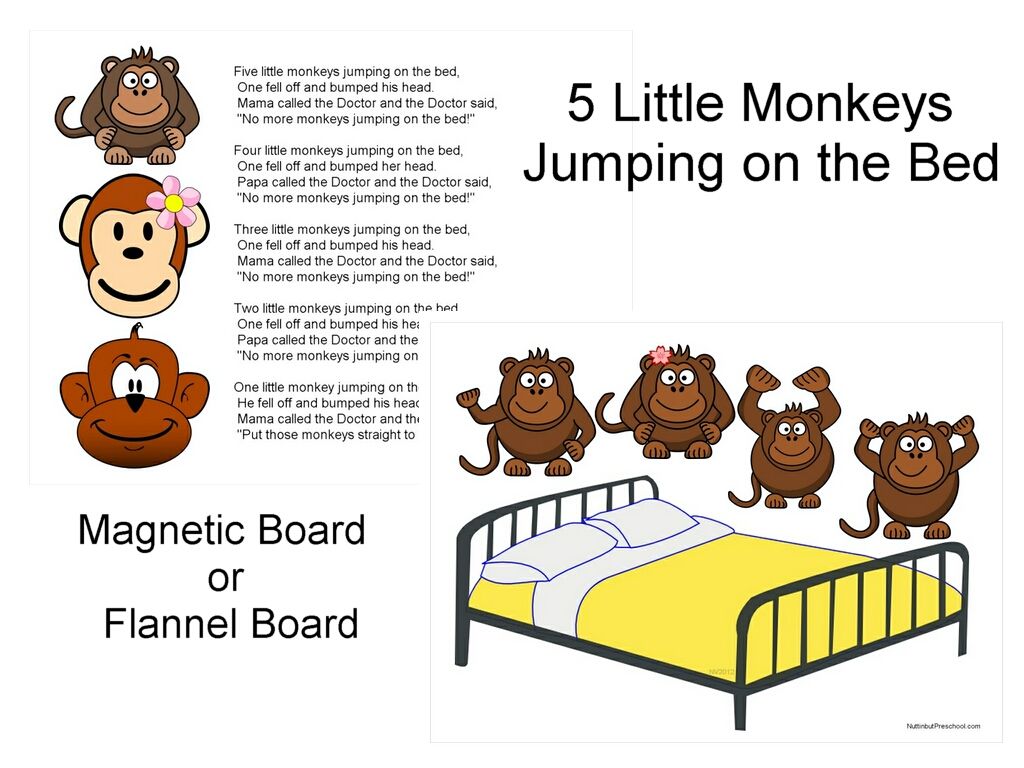
3. Masses that are very important to treat : Masses of the scalp that grow and fix in place are very serious and definitely need treatment.
Not all bumps on the back of the head are abnormal
It is very common to find edema and bulges behind. Masses form on the skin, under the skin, or in the bones. There is a wide range of reasons for these bumps. From trauma to congenital diseases such as craniosynostosis. But in addition to these cases, the human skull also has natural bumps on its back. This bulge, called the inion, is located at the bottom of the skull and at the junction with the neck muscle.
But if you feel any unusual bumps on your back that are growing and you feel pain and fever, you should see a doctor as soon as possible. nine0003
📌 questions of surgery and advice on treatment
What kind of bumps does the child have on the head!? Not from a blow
Complain
November 4, 2013 02:50 at on both sides on the back of the head on the sides.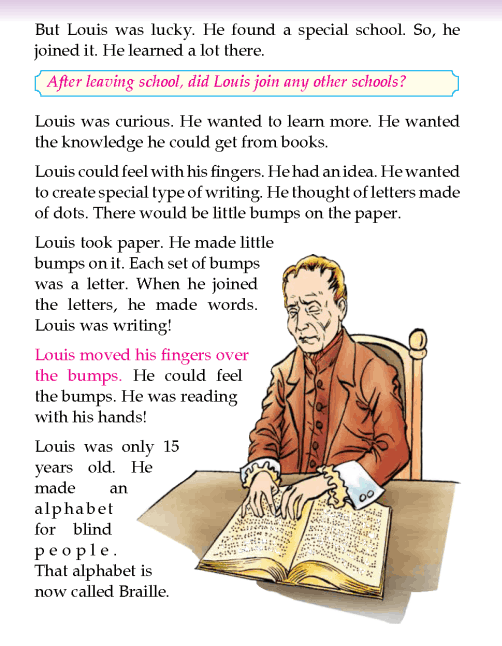 I’m terribly worried, I’ve already read that oncology that all sorts of lipomas, they don’t bother the child, they’re not painful. children at that age are like that. They are like peas in size. A child is 2.3
I’m terribly worried, I’ve already read that oncology that all sorts of lipomas, they don’t bother the child, they’re not painful. children at that age are like that. They are like peas in size. A child is 2.3
Lump on the back of the child's head
Complain
October 2, 2016 9:26 pm at Personal journal
And I found a small bump somewhere not far from the ear and approximately opposite it ... I don’t know what to think ... maybe someone ... I would have hit a scream for sure ... it’s unrealistic to call a doctor, that’s a separate story, I’ll consult a victory tomorrow or maybe I’ll bring the child to the clinic maybe he’ll run out and have a look… kapets how the night starts like this…
0 11348lump on head, what could it be.
Complain
14 May 2014 17:40 at Personal Journal
recently noticed a lump on the child's head. very hard as a bone, does not roll, definitely not a wen. not a hematoma, says he did not hit. It seems to be not painful, so the child says. lump on the back of the head. what could it be?
very hard as a bone, does not roll, definitely not a wen. not a hematoma, says he did not hit. It seems to be not painful, so the child says. lump on the back of the head. what could it be?
Lump, tubercle on the back of the lower part of the child's head :(
Complain
30 December 2014 05:40 at Personal Journal
Girls, a big hello to everyone! dense as a bone and he has a fairly impressive size, it is not a small bump. Symmetrically, there is a similar one from it, but it is smaller in size. When touched, it does not cause any pain or a certain discomfort. What could it be and has anyone encountered this? The head is already spinning, it’s worth panicking, or is it the bones of the skull that haven’t risen as expected, the fontanelles haven’t grown yet ... Ahhh ... Tomorrow we’ll go to an appointment with the district pediatrician, I’ll ask for a referral for an ultrasound of the head. nine0003 0 65286
Child's bump
Complain
June 23, 2013 9:34 pm at , it is not big and tough (yesterday she slapped me back with her head and in general could fill her) . .. but the question is there is no bruise there ... is it worth sounding the alarm or is it not something terrible ???? It's just that we are not in the city and there are no children's specialists here, we are visiting my grandmother ... I will watch, my mother said they will look in the sun tomorrow, I do not droop, but still not very happy. And yes, by the way, she doesn’t hurt her, she lets me touch, though if I feel and press for a long time, then she takes her head
.. but the question is there is no bruise there ... is it worth sounding the alarm or is it not something terrible ???? It's just that we are not in the city and there are no children's specialists here, we are visiting my grandmother ... I will watch, my mother said they will look in the sun tomorrow, I do not droop, but still not very happy. And yes, by the way, she doesn’t hurt her, she lets me touch, though if I feel and press for a long time, then she takes her head
Flux on the child's gums
Complain
October 2, 2017 13:08 at ) the upper ones immediately got out and began to crumble along the quiet, then the lower ones, the lower 2 are still normal to this day, then again the upper ones and again crumbled, in general, by half a year, we ran all over the dentists in Kazakhstan (Astana) basically refused us, did not want to take for the child, because it is small! They found a doctor, as a result, they put a filling on the first tooth, like treating it and grinding it along the gum. The child, of course, yelled, it was a pity, but what to do? It just couldn't be left like that. The filling lasted maybe 2 months, the tooth crumbled further and it flew out. I thought again, since such cases make no sense to treat the second one in the same way, let's go ...
The child, of course, yelled, it was a pity, but what to do? It just couldn't be left like that. The filling lasted maybe 2 months, the tooth crumbled further and it flew out. I thought again, since such cases make no sense to treat the second one in the same way, let's go ...
baby spots!
Complain
15 March 2014 09:40 at Personal journal
Tell me what it could be? The child has red spots on the back of the scalp. And these spots are almost from birth. They increase, then they disappear. Now they have appeared back. Doctors don’t say anything, maybe they just didn’t see it, but I didn’t ask, but then I learned from a friend that they seem to need to be burned out until the little ones otherwise turn into bumps! So did it happen to you like how you got rid of it? nine0003 0 17414
Our news. Or how the kindergarten called guardianship ... we are lucky for caregivers .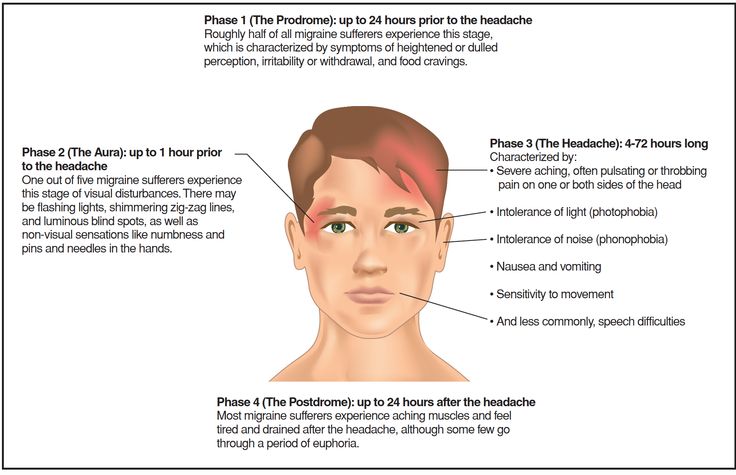 ..
..
Complain
December 12, 2016 18:12 at Personal journal
Good day everyone! It’s just that we improved relations with the teacher and everything became fine, as a new teacher came. Background: Either the husband picks up his son in the evening, and his 2 boys are pulled by the legs with their backs across the floor across the entire playroom, and this is when raising a new one, then his boy was strangling standing next to her. They also told me that this educator when Max was indulging and hiding in his locker, left him in the group and went for a walk with the rest. Who Max was with is unclear. So the story is this, last Thursday, 10 am. I'm at work, a new teacher calls me, saying that the manager urgently calls me or my husband ... I said that we are both at work and can only do it in the evening. Then she something g ...
0 224164What are these bumps?
Complain
January 11, 2013 11:58 am at Personal Journal
I haven't been on the site for a long time, there's no time, my daughter has already become bigger, and there is no time left to sit at the computer.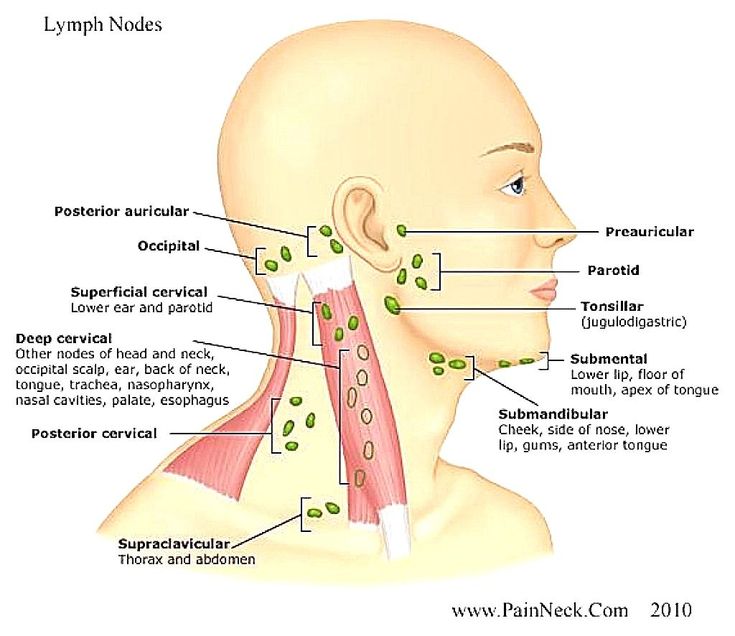 Girls, such a question ???: in a child on the head, more often on the back of the head, some bumps periodically appear, they are small, hard, like lymph nodes, only different to the touch. Pediatricians say that it's okay, these are simple lymph nodes, like on the neck, for example. They occur when a child has some kind of inflammation, or teeth are cut. But my mother doesn’t let me pass, she makes me go through all conceivable and unimaginable doctors in order to still find out what kind of bumps they are, all of a sudden it’s something TERRIBLE, and not inflammation of the nodes. Can someone share information, who has experienced this. ...
Girls, such a question ???: in a child on the head, more often on the back of the head, some bumps periodically appear, they are small, hard, like lymph nodes, only different to the touch. Pediatricians say that it's okay, these are simple lymph nodes, like on the neck, for example. They occur when a child has some kind of inflammation, or teeth are cut. But my mother doesn’t let me pass, she makes me go through all conceivable and unimaginable doctors in order to still find out what kind of bumps they are, all of a sudden it’s something TERRIBLE, and not inflammation of the nodes. Can someone share information, who has experienced this. ...
Cry of the soul
Complain
5 January 2015 14:49 at . I decided to go to the doctor and then it all started, the therapist sent me to a traumatologist, he didn’t even look at it, he just said it was a broken bone, I run to the traumatology in a panic, they refuse to take a head x-ray because the child is too small, let’s go to the neurosurgeon he looked said to come tomorrow he see if the lump is increasing, there seems to be no fracture, in general I am in shock, the child behaves perfectly, and laughs, plays, the appetite is excellent, but still I am in such a panic, I can’t do anything with myself nine0003 0 12343 to attack her. Complain 11 October 2014 09:15 at string. And it’s already so tired ... At first I felt a bump on the child’s head, I went crazy for almost 2 weeks while they were examined, mmm, they said that the structure of the skull is like that, but to observe, so even though everything seems to be fine, but the soul is not in place ... constantly I touch her, I’m worried ... Mashulya and I got sick to the heap, caught a cold or tsanpuli of nasty things ... The next day, Max fell ill in the army, fever, cough ... and there, until there are temperatures below 40, then you are healthy ... Yesterday, my mother ... decided to help my neighbor’s grandmother, I carried the bag to her house and slipped, fell, barely reached the apartment, almost lost consciousness, injured my arm ... p ... Bump and pimple on the child's head Complain October 2, 2015 5:17 pm at Personal journal Girls, hello! About 2-3 weeks ago, I felt a small pimple on the scalp of a child (10 months old), I thought, well, it’s probably a pimple, there were no redness, but the tip was visible small. I don’t understand what kind of bumps the child has??? but I want to ask you, to reassure myself))). now I suffer from chickenpox, today when examining my head I found two symmetrical bumps (on both sides) on the base of the skull (on the back). diameter 1 cm when pressed says that it does not hurt.What could it be????? a heavy object fell on the child's head Complain 22 April 2015 23:31 at Personal log I’ll write right away, the surgeon had it, looked, said that the bruise was strong, the nose was not damaged. February 9, 2015 11:08 am at Personal Journal Complain An ossified lump on the head of a child. Complain 8 August 2017 12:51 at Personal journal bruises. And since that time, the bump has become hard and now there is a "speed bump" on the head. She asked the pediatrician, she: well, the lump, well, it has become ossified, well, it's okay, like it's worse when instead of a lump it's soft, so the skull has broken and everything went to the head. what does a lump on a child's head look like? Complain 22 June 2012 19:33 at Baby health and nutrition $Girls, what does a bump on a child's head look like? It's soft, like there's liquid in there, right? My child fell off the sofa, the sofa is low, but I still worry. I was distracted for a second, take a T-shirt for him. At first he cried, and then calmed down, he behaves as usual, but three hours later I felt this bump from him. I thought about calling an ambulance, but I decided to wait until tomorrow and go to the emergency room. But still, it’s not calm somehow ... is it a bump or not ... Another bump on my head! Do your babies have bumps? Complain April 12, 2017 13:56 at Personal journal There are simply no words, emotions and despair just filled me all over. a lump on the child's head. Complain 29 May 2015 21:50 at Personal Journal I immediately turned on the light, looked, and there was a small bump, I thought it was from the taste of a mosquito, and there was no redness, I asked if it hurts to say No, but it doesn’t let me touch it. Baby has small bumps on his head Complain July 29, 2019 10:46 pm at Personal Journal Hello everyone. Today in the morning I noticed a small pink lump near the temple of the head of my son of one and a half years old. I thought he just hit his head on something. In the evening, my son had a fever and I felt 3 more bumps the size of a pea on my head. In the morning I go to the doctor, but for now I can’t sleep, I’m worried, what could it be? Who has experienced this? nine0003 0 4336 Lump on the head Complain 11 September 2013 12:38 at In general, he has a small bump on his head on the right, as at 2 months he lay down his left side and it remains, it’s more convenient for him to hold his head to the left, now it seems to be normal and turns to the right, but the bump does not go away, she went to the orthopedist she said to do a massage, an orthopedic pillow buy a soft head holder, he doesn’t sleep on a pillow, even tie him to the bed, even put pillows on, I put on a head holder, he screams like crazy and can’t stand it for 5 minutes, I’m all exhausted with him, I try to knead with my hands, but there is still unevenness, but we already 9months((((What else would you recommend? My girlfriend told me to go to a village bathhouse. A soft bump on the head of a child after a fall Girls tell me maybe someone had it.I wrote a post about a soft bump on the head, the child is 8 months old.We went at 17 b, looked at the neurosurgeon took a picture, looked for a long time and says it seems like there is no fracture and no cracks.I also watched the radio with a wave thing on temples, he also said it seems to be normal. He said to observe and smear with heparin ointment. The bump is big. He said now I don’t think it’s worth doing a puncture, maybe the blood has already coagulated there. I don’t know when it was ((falls even from all fours, but maximum from the couch a couple of times, I didn’t have time to catch it 😢 I didn’t feel sick, there was nothing unusual.He said if it doesn’t pass within 5 days, come back.I’m worried, crying.What will they do if it doesn’t pass?Maybe to… Lump on the head Complain 18 June 2015 19:43 at Personal journal Yesterday I wrote a post about a bump on the head of a child. Baby bump Complain March 27, 2011 12:43 at Health and nutrition of the baby * Girls, a small bump on the head from a blow (no need to blame me now, they say, I didn’t watch the child, but I didn’t watch it, grandfather was sitting with her ), should I be worried? We have a bump for the first time, the worst thing before that was scratches and a bruise. In theory, the lump is garbage, but it is still so small, it could not affect the GM in any way, maybe it's worth calling an ambulance? Our story - Soft bump on the head Complain February 13, 2012 15:49 at First difficulties, joys * Four days ago, I found a soft lump on the top of the head of a 1. A lump on the head of a small child. How to help and how to determine how dangerous it is? Complain December 23, 2012 09:58 at Personal Journal the baby fell off the bed on the floor and hit the heater. soft bump on the head of a child Complain 5 February 2013 10:58 at , like a tumor on the head, on the side of the top of the head, right now I’m looking like a little blue, where I slammed it like that, I’m worried, but what if it’s not from a blow, girls, did anyone have such bumps? in the older one, if he fell immediately, hard horns grew, and then like swelling or hematoma (((( Soft bump on head..SOS!! Complain October 29, 2018 11:33 pm at Personal Journal Today I found a soft lump of a decent size on the left side of my head on my youngest son. Soft bump on the head!!!Urgent! Complain October 30, 2018 09:29 at Personal Journal Last night I found a soft bump of a decent size on the left side of my head on my youngest son. Feels like liquid is there. I'm guessing it was from a blow, but I don't know when. The child behaved the last days as usual, eats well, no vomiting, no drowsiness. Today we will run to the doctor, but to which one ??? to the surgeon Who could have such that the bump is not hard, but soft? what they were doing? nine0003 0 1150 lump on head, hard as bone. what could it be? Complain 17 May 2014 19:26 at Personal log This concerns a child, 7 years old. ..
.. 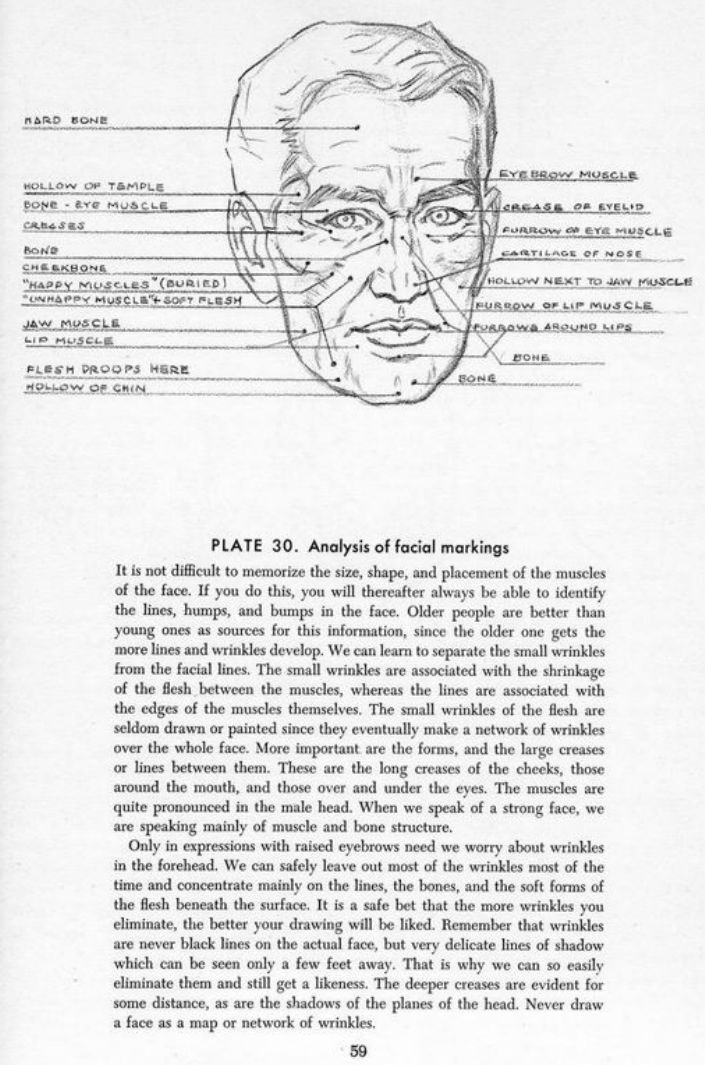 Yesterday I felt a bump in the same place! 3 mm somewhere and also a slightly reddened dot at the end. Today I ran to the surgeon, he said, it is not yet clear what it is, like inflammation of the hair follicle - folliculitis, but then it would have passed, since 3 weeks seems to be a long time for her, or atheroma (benign cyst), or something else something like that. Has appointed or nominated ointment Fucidin week to anoint then to it or him. If folliculitis, then it should pass, if not, we will look further ... Girls, I'm so eager, I ...
Yesterday I felt a bump in the same place! 3 mm somewhere and also a slightly reddened dot at the end. Today I ran to the surgeon, he said, it is not yet clear what it is, like inflammation of the hair follicle - folliculitis, but then it would have passed, since 3 weeks seems to be a long time for her, or atheroma (benign cyst), or something else something like that. Has appointed or nominated ointment Fucidin week to anoint then to it or him. If folliculitis, then it should pass, if not, we will look further ... Girls, I'm so eager, I ...  A neurologist or a neuropathologist, looked at the reaction, touched his head, he also says it’s normal. But I looked worried at night. This morning we played calmly with my son, 1.3g. I didn’t even have time to blink when he fell, and a stool falls on him, or rather on his forehead. That is, he wanted to catch on a stool, but in the end he fell with him. She quickly took out the child, cried for 2-3 minutes, put a piece of meat from the freezer, a small bump came out, a little blue just above the bridge of the nose, between the eyebrows. We got dressed and after 10 minutes we were already at the doctors, examined, they said it was nothing to worry about. But I'm worried about something, the child behaves calmly, not a whim ...
A neurologist or a neuropathologist, looked at the reaction, touched his head, he also says it’s normal. But I looked worried at night. This morning we played calmly with my son, 1.3g. I didn’t even have time to blink when he fell, and a stool falls on him, or rather on his forehead. That is, he wanted to catch on a stool, but in the end he fell with him. She quickly took out the child, cried for 2-3 minutes, put a piece of meat from the freezer, a small bump came out, a little blue just above the bridge of the nose, between the eyebrows. We got dressed and after 10 minutes we were already at the doctors, examined, they said it was nothing to worry about. But I'm worried about something, the child behaves calmly, not a whim ... 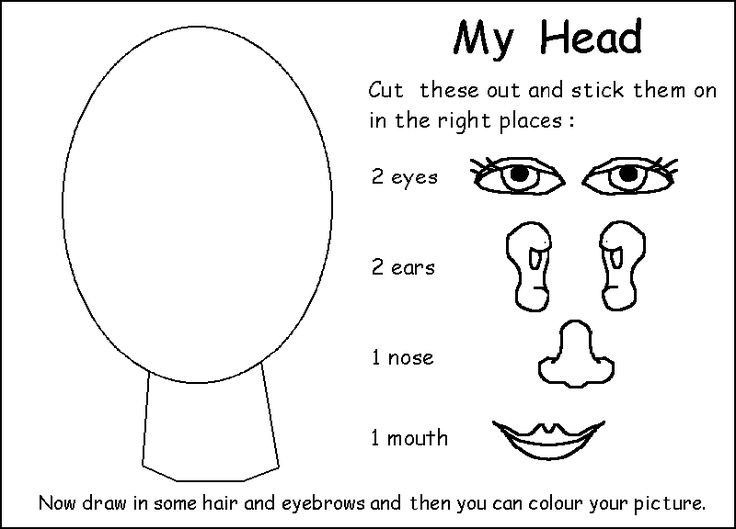 Small children, in particular toddlers who have just learned to walk, quite often frighten adults with their unexpected falls. One has only to be distracted for a moment, as the crumb is already conquering the next “peak” in the form of a chair or sofa. But for children who do not yet know how to move independently, their favorite pastime is rolling from back to stomach and vice versa. It is good if all these body movements of the baby do not pose a danger to his health. Despite all the security measures taken, accidents sometimes happen…2 93303
Small children, in particular toddlers who have just learned to walk, quite often frighten adults with their unexpected falls. One has only to be distracted for a moment, as the crumb is already conquering the next “peak” in the form of a chair or sofa. But for children who do not yet know how to move independently, their favorite pastime is rolling from back to stomach and vice versa. It is good if all these body movements of the baby do not pose a danger to his health. Despite all the security measures taken, accidents sometimes happen…2 93303 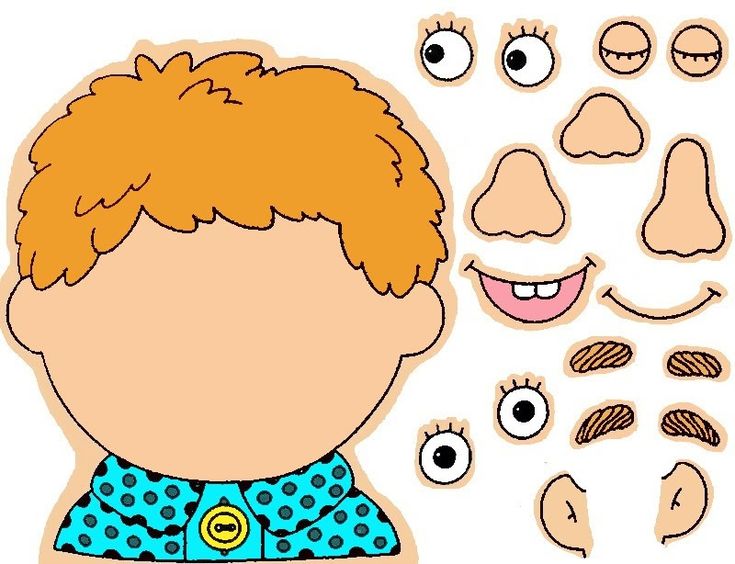 Well, he doesn’t seem to be bothered, I feel, I press, he doesn’t ride, but when he has a short haircut, she is very visible. And now it's forever? Maybe someone had something similar? nine0003 0 161803
Well, he doesn’t seem to be bothered, I feel, I press, he doesn’t ride, but when he has a short haircut, she is very visible. And now it's forever? Maybe someone had something similar? nine0003 0 161803  4 bumps in a month. I go after her, but it’s worth turning away for a second, the mud to you. Yesterday she fell again and hit the wall, and then her head on the floor. I scold myself that I didn’t have time to catch it. (((After the blow, somehow strangely crawled, or rather, I couldn’t even crawl, but after 10 minutes I calmed down, they called an ambulance, the doctor said they say I have three of them and also fall, the bump is not big, but I say you they don’t dissuade you from going, but at the same time, keep in mind that there will be an x-ray and they will call the police to you. I was not so scared of the police, but the x-ray. Now I go crying and don’t know what to do, but what if something is wrong ??? Have you ever had such cases that the child fell headlong?0003 0 19211
4 bumps in a month. I go after her, but it’s worth turning away for a second, the mud to you. Yesterday she fell again and hit the wall, and then her head on the floor. I scold myself that I didn’t have time to catch it. (((After the blow, somehow strangely crawled, or rather, I couldn’t even crawl, but after 10 minutes I calmed down, they called an ambulance, the doctor said they say I have three of them and also fall, the bump is not big, but I say you they don’t dissuade you from going, but at the same time, keep in mind that there will be an x-ray and they will call the police to you. I was not so scared of the police, but the x-ray. Now I go crying and don’t know what to do, but what if something is wrong ??? Have you ever had such cases that the child fell headlong?0003 0 19211 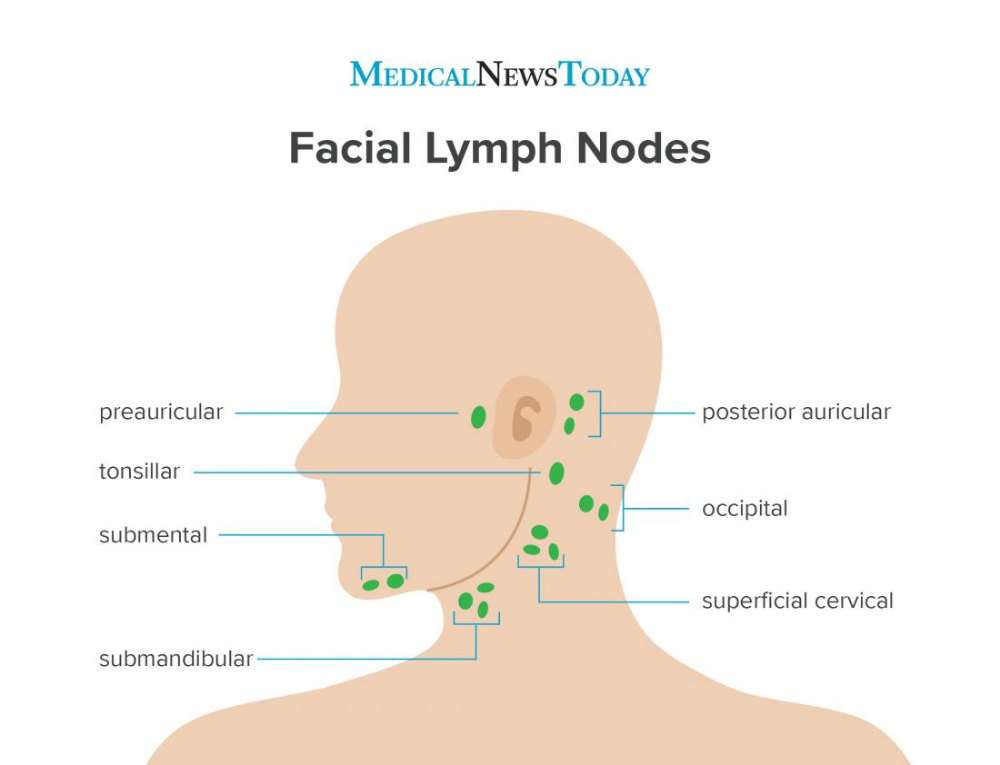 I know with such things I need to see a doctor right away, but the weekend is ahead, I I just want to know if anyone has had this? and what it turned out to be in the end. And by the way, I didn’t seem to hit my head anywhere. nine0003 0 181701
I know with such things I need to see a doctor right away, but the weekend is ahead, I I just want to know if anyone has had this? and what it turned out to be in the end. And by the way, I didn’t seem to hit my head anywhere. nine0003 0 181701  ..
.. 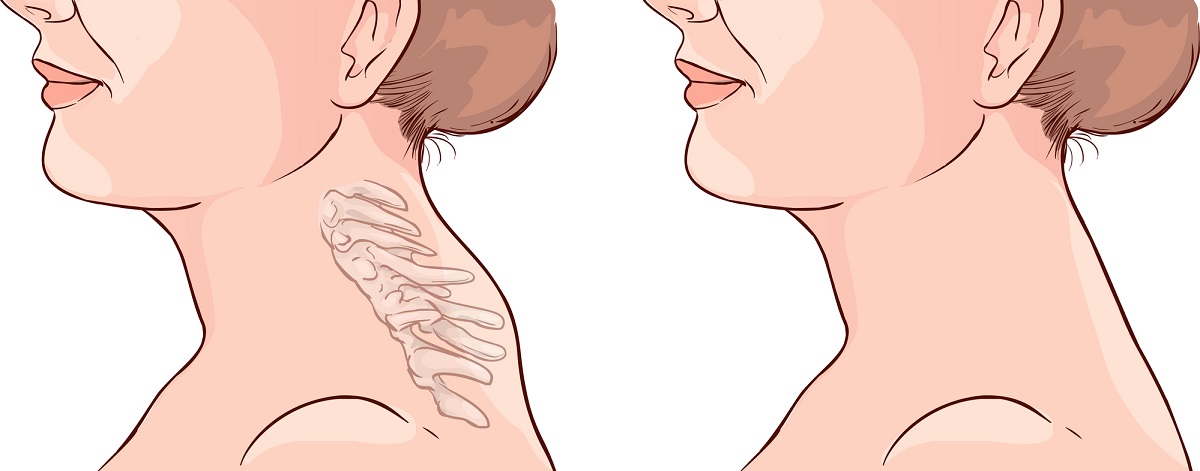 Tonight she combed it and I noticed that the pus came out ... a lump with a diameter of 3-4 cm is just so noticeable. I don't think a midge can bite like that. Treated with alcohol and brilliant green. We'll go to the surgeon tomorrow. What could it be?
Tonight she combed it and I noticed that the pus came out ... a lump with a diameter of 3-4 cm is just so noticeable. I don't think a midge can bite like that. Treated with alcohol and brilliant green. We'll go to the surgeon tomorrow. What could it be?  5-month-old child. On palpation, the lump is not painful and is not visually noticeable. We ran to the floor for an ultrasound scan, because the lump has no clear boundaries, the tumor was ruled out. The doctors said that the hematoma was from a bruise. We were sent to Morozovskaya by ambulance - ultrasound, X-ray, the doctors offered to stay under observation in the hospital. The conditions in the surgical department are terrible: in a ward that has not even been seen for a long time space repair of 6 mothers with children under the age of one year. There are 2 toilets and 2 baths for 6 wards (literally 2 baths in one room without partitions). There is a paid department of 7 tr. per day, but only pediatricians work there and all specialists invite their others ...
5-month-old child. On palpation, the lump is not painful and is not visually noticeable. We ran to the floor for an ultrasound scan, because the lump has no clear boundaries, the tumor was ruled out. The doctors said that the hematoma was from a bruise. We were sent to Morozovskaya by ambulance - ultrasound, X-ray, the doctors offered to stay under observation in the hospital. The conditions in the surgical department are terrible: in a ward that has not even been seen for a long time space repair of 6 mothers with children under the age of one year. There are 2 toilets and 2 baths for 6 wards (literally 2 baths in one room without partitions). There is a paid department of 7 tr. per day, but only pediatricians work there and all specialists invite their others ...  burst into tears. she blushed all over, almost suffocated, so she yelled at me. and on her head, not very far from the fontanel, a lump appeared the size of her fist. I calmed her down and put her to my chest. She whimpered a little more and fell asleep. and after 30-40 minutes there is no bump. the baby behaves as usual, crawls again, gets up and everything seems to be fine. Well, it's scary ... tell me what to do? nine0003 0 101010
burst into tears. she blushed all over, almost suffocated, so she yelled at me. and on her head, not very far from the fontanel, a lump appeared the size of her fist. I calmed her down and put her to my chest. She whimpered a little more and fell asleep. and after 30-40 minutes there is no bump. the baby behaves as usual, crawls again, gets up and everything seems to be fine. Well, it's scary ... tell me what to do? nine0003 0 101010 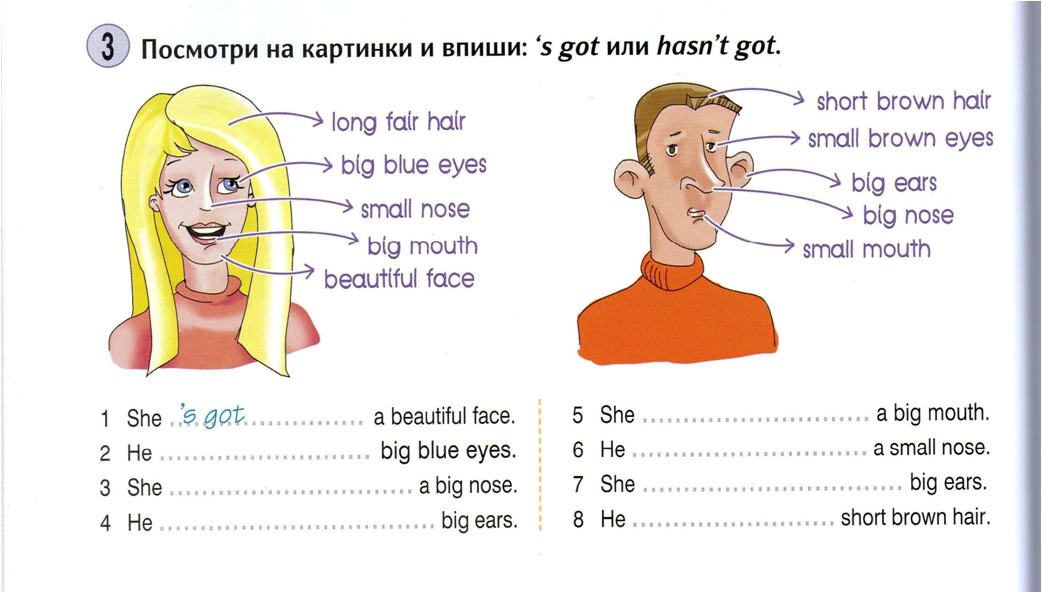 Feels like liquid is there. I'm guessing it was from a blow, but I don't know when. The child behaved the last days as usual, eats well, no vomiting, no drowsiness. Tomorrow we will run to the doctor, but to which one ??? to the surgeon Who could have such that the bump is not hard, but soft? what they were doing? nine0003 0 8274
Feels like liquid is there. I'm guessing it was from a blow, but I don't know when. The child behaved the last days as usual, eats well, no vomiting, no drowsiness. Tomorrow we will run to the doctor, but to which one ??? to the surgeon Who could have such that the bump is not hard, but soft? what they were doing? nine0003 0 8274 